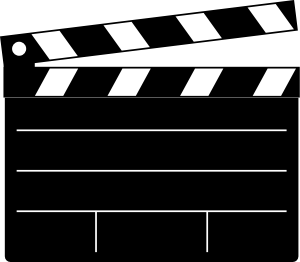5 Week 5 Pricing Creative Work
Week 4 Pricing for Creatives
Introduction
 Learning Objectives
Learning Objectives
In the week, students will …
- discover and compare different models for pricing creative services
- relate to freelancers pricing services
- research competitive pricing for services
This chapter should take you 14.2 minutes to read and plus time to complete an In-Class Case Study.
For many new graduates, the costs of doing business can be as stressful as the price of doing business. When starting out many graduates working in Creative Industries need to work as independent contractors. One of the more common challenges when starting out as a contractors is establishing the price for your services.
Meet Lauren
A recent graduate of a four-year Communications and Media program, Lauren secured an internship with (British Columbia Lottery Corporation) BCLC in Vancouver of her senior year. In this role, she learned copyediting, created press releases and sourced photos for some of the social media posts.
When the role ended, her supervisor told her: “Lauren, with all of your media and communication skills, you should consider freelancing. You have all the right skills and with the right marketing you will be sure to land some clients. You can even use me as a reference.”
 Case Study: Meet Lauren
Case Study: Meet Lauren

Lauren was flattered by the suggestion and took the recommendation seriously. Over the next week, she started brainstorming names for business, promotional ideas, friends she could contact for opportunities. As part of her brainstorming, she began to realize she didn’t quite know much about the financial side of her media skills. For instance: How much does a professional charge for writing a media release? How much will clients pay for a series of posts on social media? Do I charge per project or per hour? Am I charging too much/too little? Where do I find this information? Before she could solicit clients, she needed to build a better foundation of these financial questions if she was going to freelance her skills to a wider public.
In this week’s module, we will look at some of the financial considerations that can affect Lauren and others like her that would like to freelance their talents to a variety of creative industries. Let’s get started!
Introduction
As we have seen in the course thus far, financial decision-making is an important part of any professional creative project.
 NOTE: In this module, we will explore a number of factors that will help you better understand pricing, budgeting and costs associated with a variety of creative endeavours. We will look at a variety of pricing models for freelancing scenarios as well as budgeting concerns associated with best practices for pricing models for work with or as a freelance copywriters and/or graphic designer.
NOTE: In this module, we will explore a number of factors that will help you better understand pricing, budgeting and costs associated with a variety of creative endeavours. We will look at a variety of pricing models for freelancing scenarios as well as budgeting concerns associated with best practices for pricing models for work with or as a freelance copywriters and/or graphic designer.
Successful creative practices require more than just imaginative and entrepreneurial spirit. Creative teams must also weigh carefully the financial implications of their decisions -whether that means paying for social media ads or charging companies appropriate rates for freelance services (i.e. writing public relations material, websites, programming skills etc.)
While this part of the business is not often on display, making sensible financial decisions is important for a number of reasons. Depending on the context, it could mean ensuring that you are changing industry-driven rates for the services you provide others or, on the other hand, ensuring that you are sticking to your team’s media budget when hiring freelance professionals. In this module, we will look at some of the factors that better illustrate pricing and budgeting concerns connected with a few different creative fields. Let’s get started by looking at some different pricing models at work within a range of creative fields.
Understanding Pricing Models:
One should expect to encounter a variety of different pricing models when working with or as a creative professional. As we can see from today’s reading, there are six common models of pricing for creative services – all of which we will explore more thoroughly in this week’s module.
Six Pricing Models
First, let’s identify the six pricing models discussed in this week’s reading. From here, we will attempt to understand the advantages and disadvantages of each.
Pricing will be dependent on your level of experience, the scope of the project at hand and the client that you happen to be working with.
 Table 1: Comparison of Common Pricing Models
Table 1: Comparison of Common Pricing Models
| Pricing Model | Common Industries | Advantages | Disadvantages |
| Hourly Rate | Variety of Media Fields. Writing, Website Design | Paid only for hours worked. Provides clients with flexibility | Endless difficulties in finalizing timelines and pay rates. |
| Project-Based | Variety of Media Fields: Writing, Graphic Design, Website Design. | Paid for total project as opposed to flexible hours-Provides clients with security of knowing how much it will cost. | Takes practice to estimate project. Ambiguity on goals can lead to problems. |
| Billing by Retainer | Long-standing corporate clients. Public relations companies. | Great for recurring work-Costs are predictable | Keeping track of time and deliverables. Hard to get these kind of projects |
| Value-Based | Variety of Media Fields. Premium Media Companies. Influencers. | Can charge extra for added delivered value. | Out-priced by competitors. Premium value can be difficult to quantify. |
| Performance-Based | Variety of Media Fields. | Compensation-based. Payment is based on success.
|
Payment is based on success making it hard to quantify. |
| Equity-Based | Start-up Companies / Companies undergoing transformation | Creates loyalty with clients. Can lead to prosperous compensation on the right project. Good for companies with lighter cash flow. | High-risk arrangement. -Should understand what you are exactly getting in return (i.e. shares) |
 Reading Questions
Reading Questions
- Which model do you believe offers the most advantages to freelancers in your particular field? Why?
- Which model do you believe offers the most disadvantages to freelancers in your particular field? Why?
- What is the most surprising thing that you learned from your assessment of these different price models?
- Is there anything that is missing from this article? If so, what?
 Note: Be prepared to discuss your answers with the class.
Note: Be prepared to discuss your answers with the class.Freelance Models: Pricing 101
As we see, there are at least six different pricing models for freelance opportunities – which all come with a number of strengths and weaknesses. Subsequently, there is no one size fits all approach to freelance jobs. There are many factors that must be taken into consideration that vary with each and every project such as:
With these factors in mind, let’s dive a bit deeper into pricing for freelance roles by hearing from some individuals who do this for a living.
In our second reading for the week: “Pricing 101: How To Price Yourself As A Freelancer”, we read about a first-hand account from a freelance graphic designer. Jorgovan outlines mistakes that were made from the outset, struggles with work-life balance and ultimately larger questions about the differences in hour-based vs project based quotes on his productivity and his wallet.
In small groups, download and complete the following list of questions as part of your engagement with this week’s reading. Feel free to find the article online or have someone act as a notetaker for your group. When you are done, in the same small groups answer the questions below and be prepared to discuss your answers with the class.
 Reading Questions
Reading Questions
- What events led him to a change in mindset on pricing?
- What did he mean by the following claim: “With pricing, it’s not just about the money. It’s about quality of life?”
- Why does this author consider project-based pricing a better solution?
- How did the author come up with the ‘no formula’ approach to pricing?
- What are the important lessons to learn from his experiences as a freelance designer?
There is a lot of rich, and sometimes counterintuitive advice in this article. Let’s break down some of the talking points from the article and lessons learned.
Pricing 101 Advice
- Work-life Balance: Be careful with taking on too many clients and working too many hours as it’s not always an indicator of generating more income.
- Time-tracking software: Using sites like Upwork can offer invaluable time-saving strategies for tracking time-based.
- Earned Experience: Freelancers become better at quoting for both hourly and project-based opportunities by taking on new opportunities and learning from their successes and mistakes.
- Change in Mindset: Shifting the focus of freelance work away from the time spent completing the project towards the value generated can be a gamechanger in growing your freelance business.
- Experiment with Pricing: There are industry expectations but there are other factors that should also be factored in: clients’ budget, relationship with client and value of the given project. Don’t be afraid to charge rates that value your time, experience and talent accordingly -regardless of industry rates.
Regardless of the project or the field that you will be working in, it is important to consider the kind of model that will work for you in addition to questions connected to work-life balance, experience in quoting and your mindset about a particular project. Jorgovan provides us with a timely discussion of how to make the most of your freelance work. Now, let’s turn to a video of other freelancers offering their thoughts on the subject.
 Video Activity: Fiver Freelancer Success Story [10 minute video]
Video Activity: Fiver Freelancer Success Story [10 minute video]
]
- Fasulo tells a compelling story of her move into successful freelance work, what factors contributed to her success?
- What are the lessons learned from Fasulo’s story?
 Video Activity: Advantages of Fiver and Freelancing Explained [2 minute video]
Video Activity: Advantages of Fiver and Freelancing Explained [2 minute video]
]
- While this video aims to persuade those looking to find freelancers, what are the advantages from a creator standpoint as well?
- If you are new to Fiver or Upwork, make a list of three niches that you would like to work in as a freelancer. What do you think the challenges are for a new freelancer on these sites are?
Competitive Pricing Research & Hourly Rates
When looking to start your business or taking on a special project, it is important that you conduct some secondary and primary research to understand the market’s pricing norm. A pricing norm is based on identifying the pricing models typically used in that industry and the rates that are typically charged to get work done.
Whether the project is for you as an individual freelancer doing the work or coordinating several freelancers to do the work, you will need to identify costs to help you price competitively.
When collecting information and not having a background in an industry, you may need to rely on internet search and what you can publicly find to see the typical value of a service. In this case, there are two good operating principles to know and understand.

Photo by Manik Roy on UnsplashConverting Hourly to Salary. If your research identifies that graphic artists are on average paid $30 per hour, how much should an annual salary be for a graphic artist. In this case, you would multiply $30 per hour times 2,000 hours and have an estimated annual salary of $60,000.
Converting Salary to Freelance Hourly. Converting salary to freelance hourly is somewhat different. As an employer, they do not have to pay benefits such as healthcare, retirement or payroll contributions to the employee. So if you see a job for $60,000 and want to identify what it would be equivalent to in a freelance hourly wage, you would take the $60,000 and add on 20% and then divide by 2,000. In this case a benchmark for a freelancer would be around $36 per hour.


